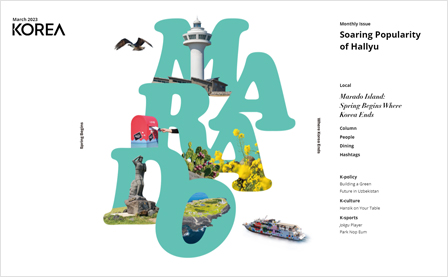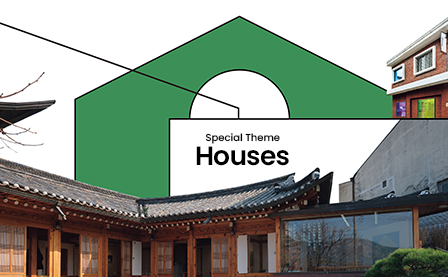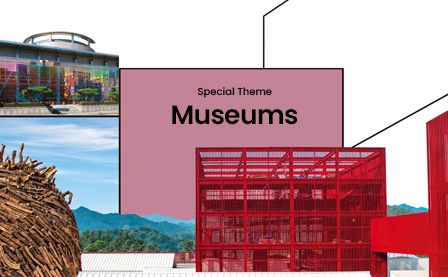April 2023

Local
Written by
Yu Pureum
Wanju:
A Place of Refresh and Rejuvenate
In today’s fast-paced society, finding rest is crucial, but the ways in which people seek it can vary. Some prefer to indulge in solitary activities that they enjoy, while others choose to spend time with loved ones to recharge. Regardless of your preferred method of relaxation, Wanju offers a variety of options to suit your needs. With lush greenery and blooming flowers in April, there’s no better time to visit Wanju and unwind in your own way.
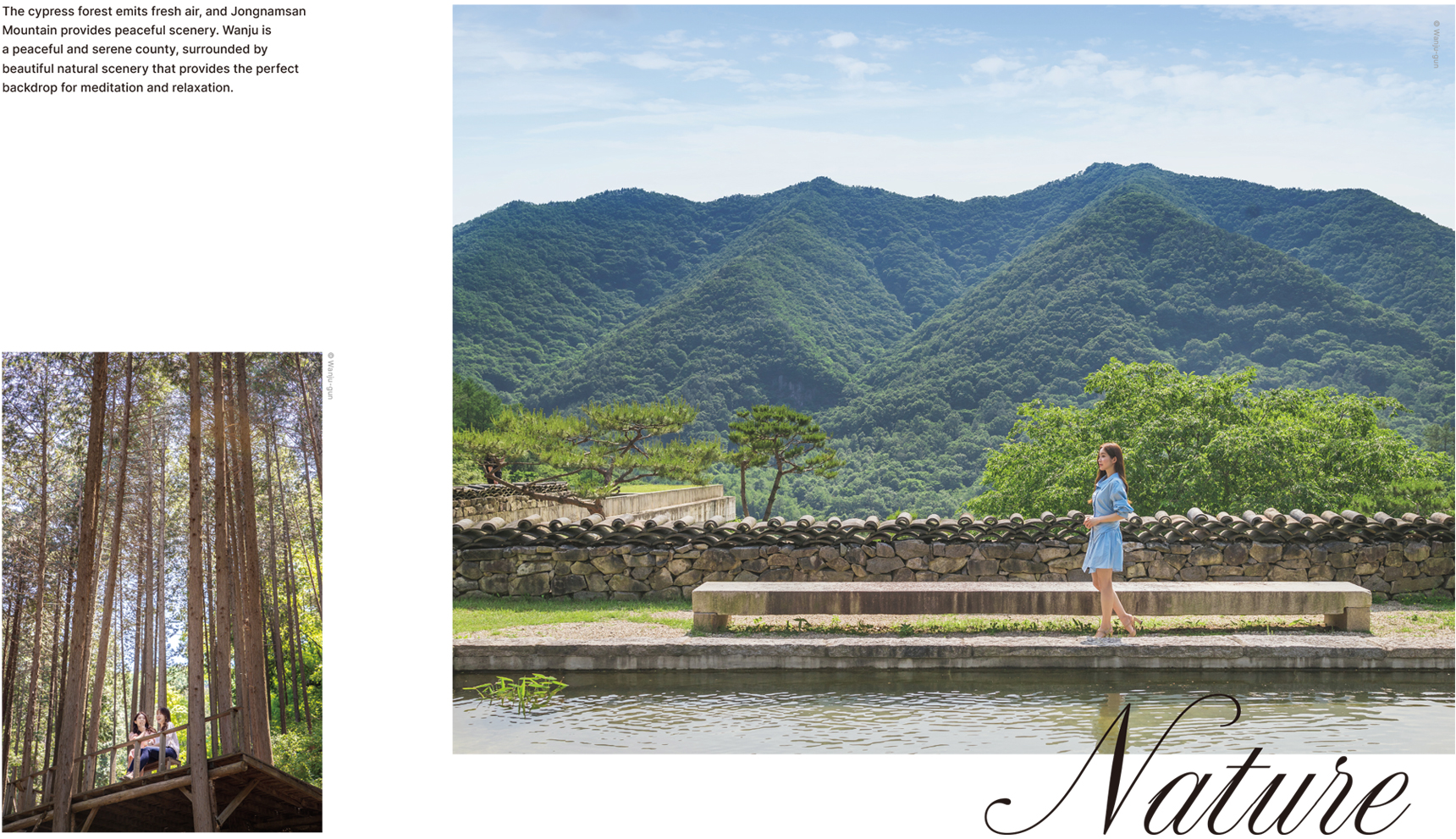
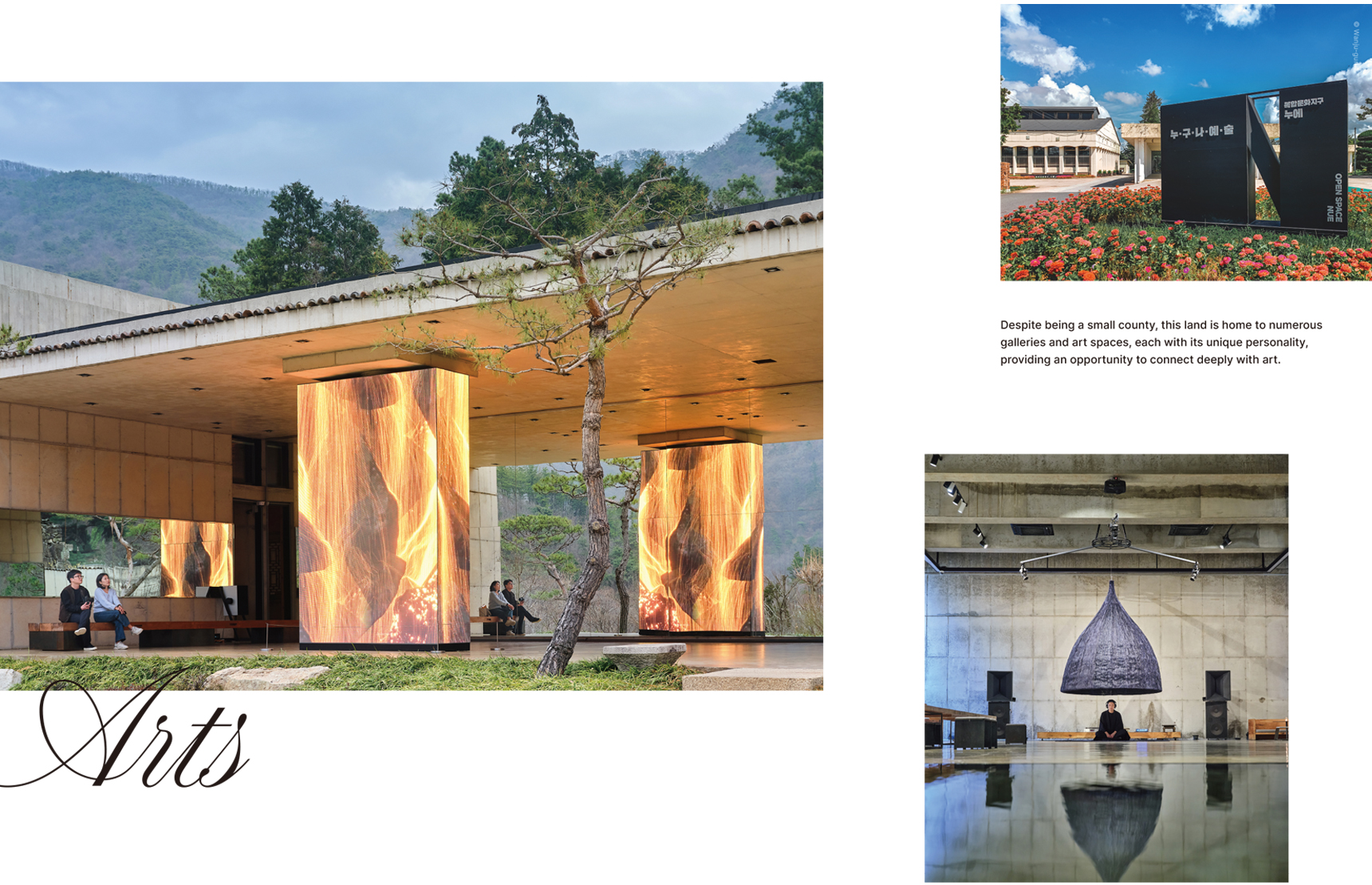
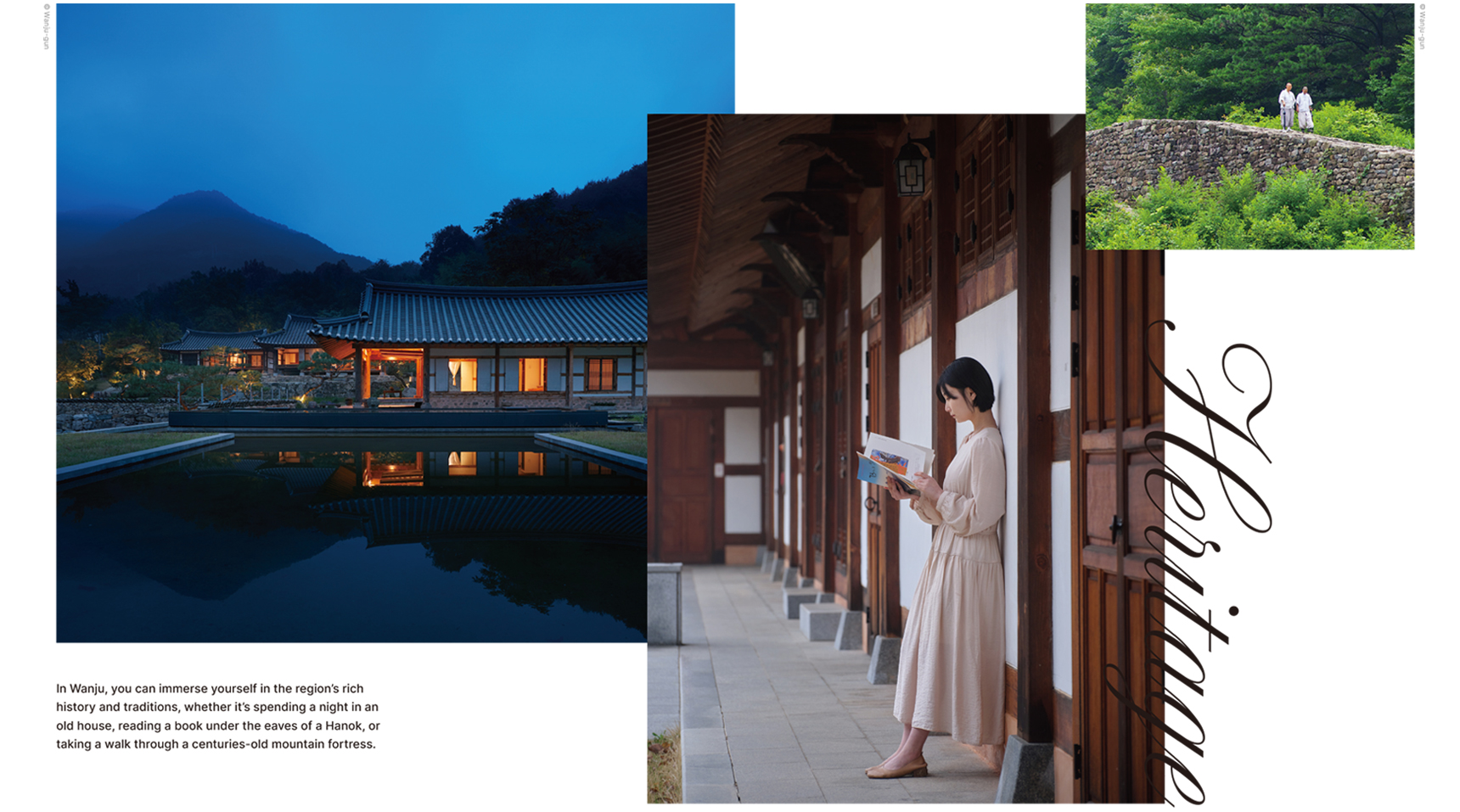
Local
Column
A Healing Escape to Wanju
For some people, Wanju County’s pristine natural vistas are the best place for relaxing, reflecting and rebooting. Others may prefer the county’s cultural and art spaces, while still others may opt for historical sites from centuries past. While Wanju is doubtless a perfect place for indulging in some contemplation, the fact is that there are many other places in Korea where nature, art and tradition stand side by side. So how did Wanju come to be called the land of rejuvenation?
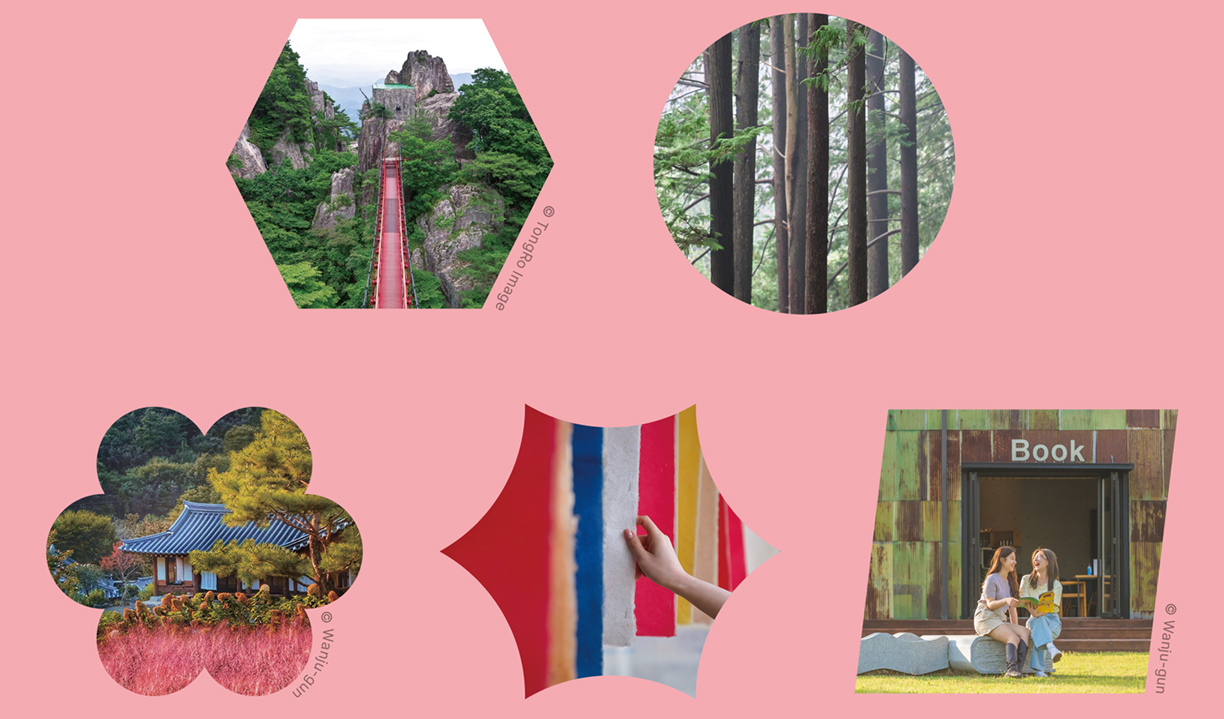
At Your Own Pace
Northern Wanju is where you can experience the essence of the county’s natural attractions. That’s the site of Daedunsan Mountain, considered the most stunning mountain in Korea’s southwestern region. A thousand or so massive boulders run for 6 kilometers below the tallest peak of Macheondae (878 meters), creating a gorgeous alpine vista. Here’s a tip for anyone interested in hiking the mountain: go at your own pace. Forget about being swept along by the crowd on the streets downtown—here, you can walk however fast or slow you choose. There’s nothing wrong with getting an occasional lift from a cable car or lingering on the path to admire a pleasing landscape.
If you’re more interested in relaxing in the crisp forest air than going for a trek, how about visiting the cypress woods to the south? Hundreds of thousands of cypress trees here release phytoncides, organic chemicals that invigorate both the mind and body. The magic of the forest is magnified by piles of stones stacked up by people hoping their wishes will come true. If the cypress forest is your aim, don’t let a little drizzle keep you away. Sunny days have their place, but the ethereal mood evoked by mist looming over the ground has a charm of its own.
Inimitable History
Southern Wanju boasts of inimitable historical sites. Soyang Township is home to Wibongsanseong Fortress, built in 1675; old houses that are 250 years old; and Songgwang Temple, which dates back to the Silla Dynasty. Interestingly, the old houses here were relocated from such places as Jinju, Gochang and Muan. Historical structures that can’t be reproduced through contemporary techniques were moved here, bearing witness to the long centuries.
Other sites have been recreated through traditional methods, including O Sung Hanok Village. The 23 newly built Hanok (traditional houses) in the village are inhabited today. The entrance to each house is adorned with its own doorplate: “House of Dreams,” “Fortunate House,” “Just a Happy House.” While reading the doorplates that express the residents’ varying philosophies, you may find yourself wondering what your own doorplate should say.
A half hour’s drive brings you to Daeseung Hanji Village, a place where tradition can be not only admired, but also experienced. In the past, Wanju was the site of 70% of Korea’s Hanji (traditional hand-made paper) production, and Kim Han-seop carries on the tradition here today. Visitors can see not only the traditional paper-making method, but also a range of art products made from Hanji. Encountering the rich history of southern Wanju inspires us to reflect upon what should be preserved and what should be developed today.
The Rediscovery of Value
Wanju is the sort of place where apparently useless things can be given new purpose with just a little bit of thought. Take Bibijeong Art Train, for example. The county government bought four old train cars and remodeled them into a restaurant, art shop and cafe. The renovated train now perches atop an unused rail bridge on the Mangyeonggang River. Bibijeong Art Train has become a popular spot for viewing a spectacular sunset on the river. While the train no longer serves its original purpose, it now offers visitors a poignant, beautiful landscape—something it couldn’t have done in its former life rolling down the tracks.
Many cultural and art spaces in Wanju have gotten a new lease on life in this way. An old granary became the Samnye Culture Art Village, which blends historical and contemporary culture. A place where silkworms (in Korean, nue) were once bred has returned to life as the Open Space Nu-e, a platform for local artists. The red lighthouse in the hills of Soyang Township was repurposed from a smokestack at a paper mill that had been abandoned for four decades. And the paper mill has been transformed into a culture center, too.
Wanju is a land where not only people, but things, have the chance to take a break and find new value. Plus, it’s within easy reach of anywhere in Korea. Wherever you choose to visit, Wanju is ready to provide some precious moments of rejuvenation.


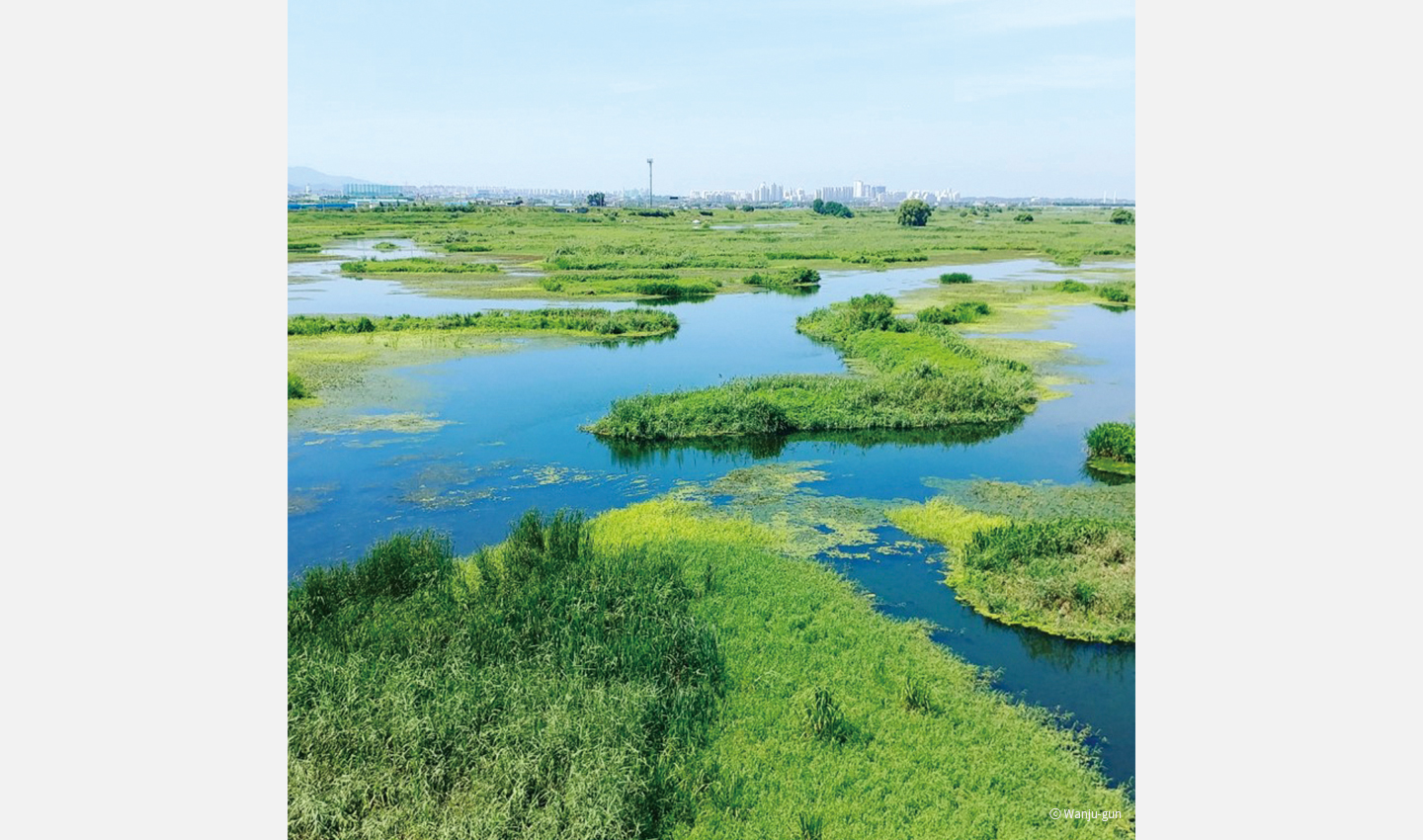
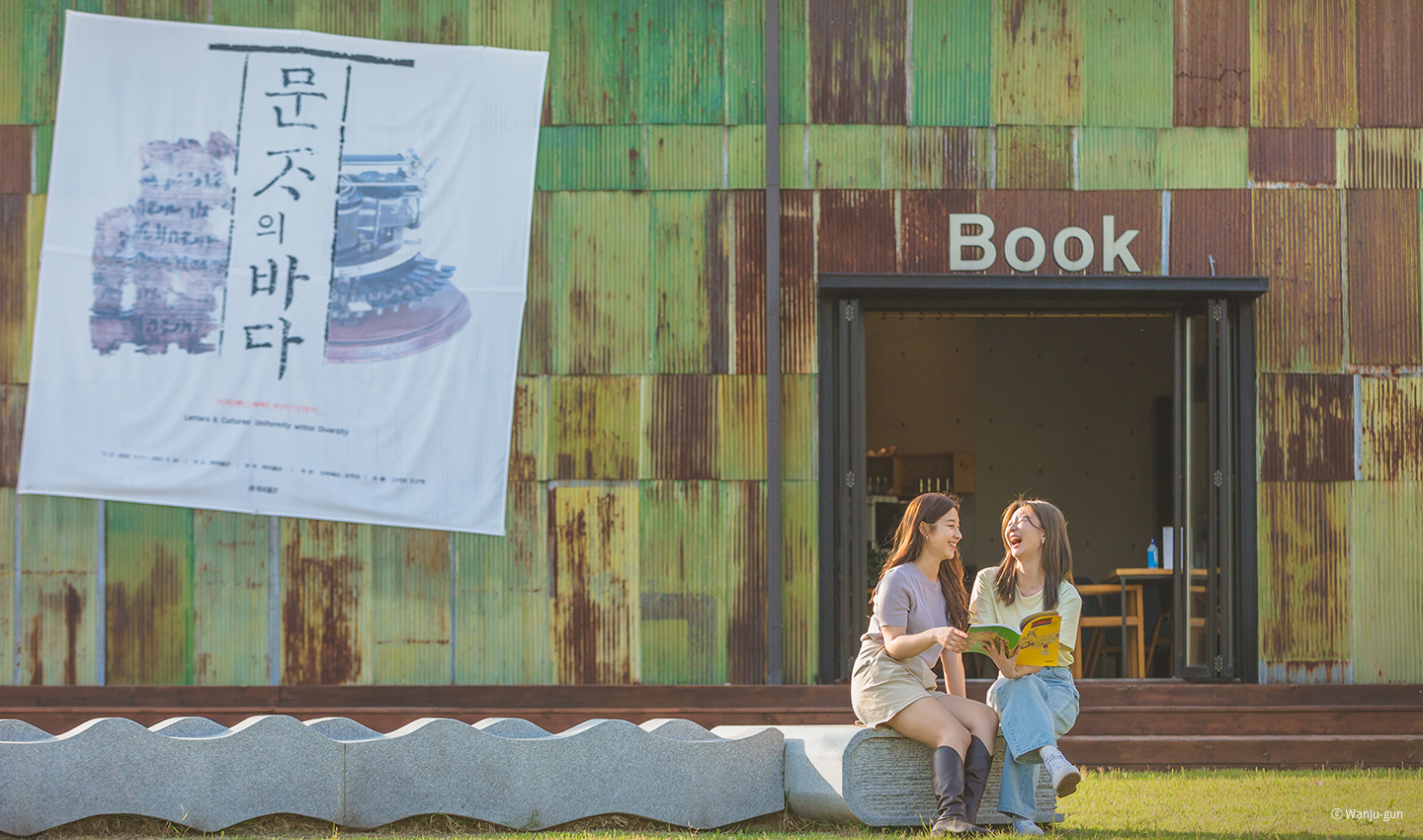
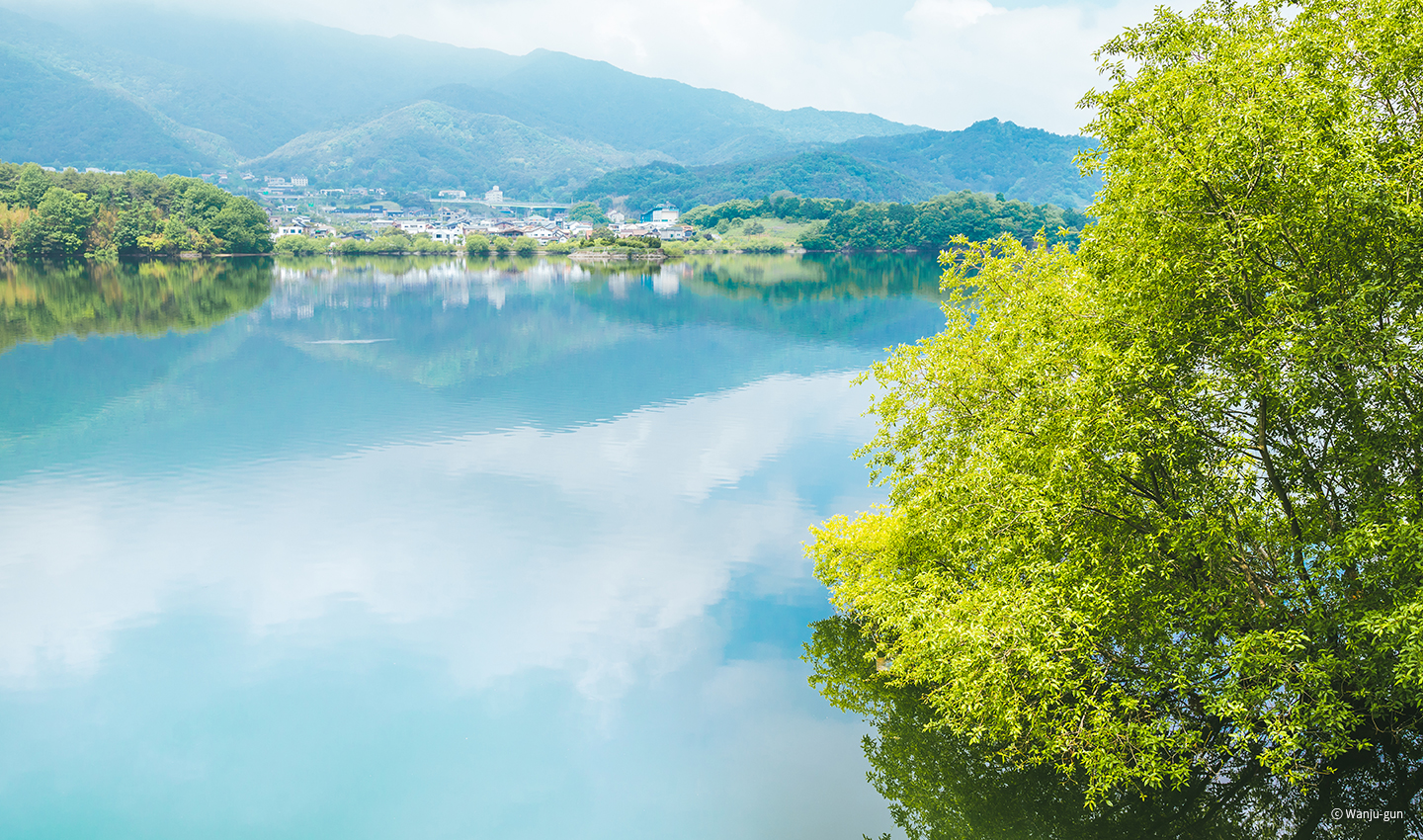
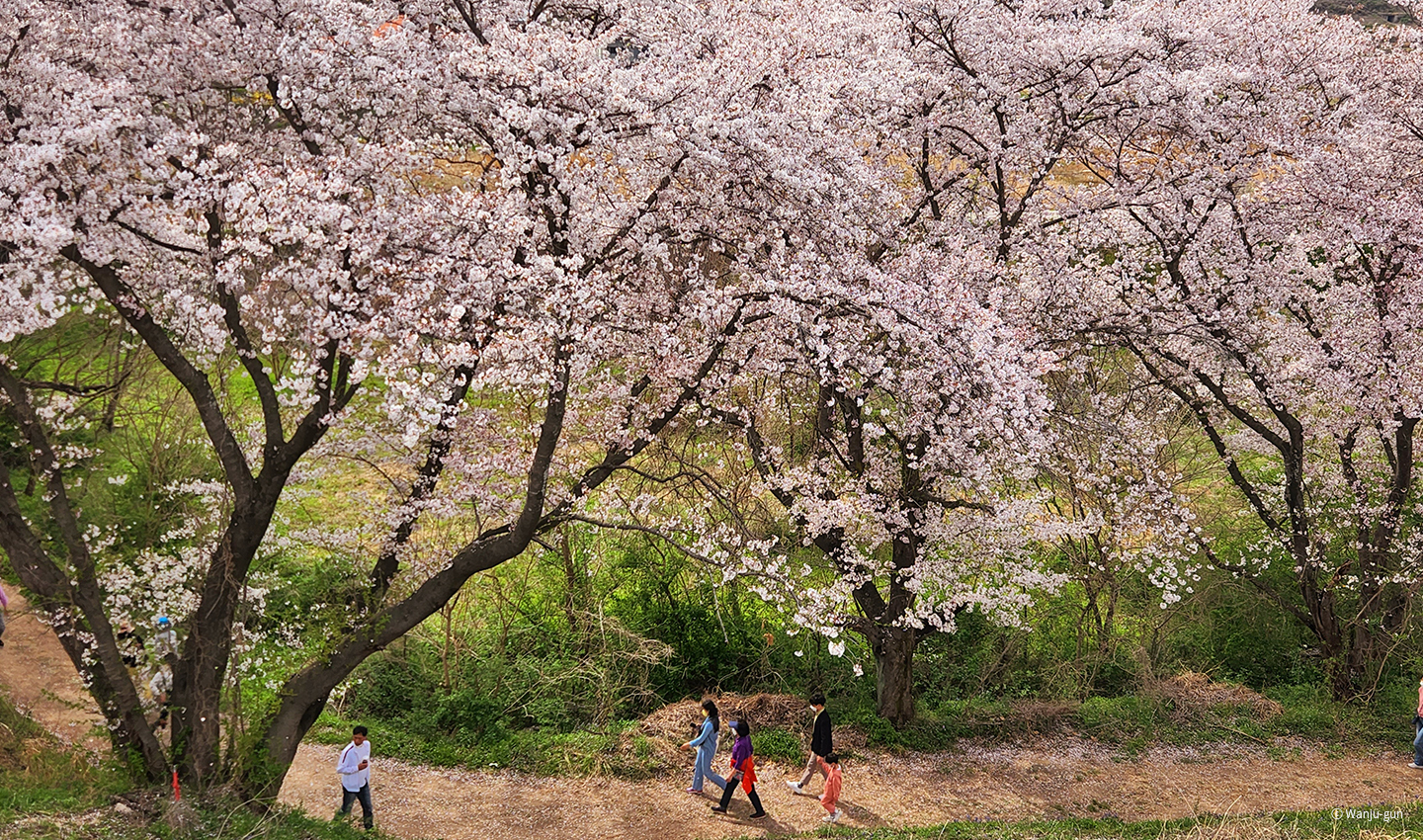
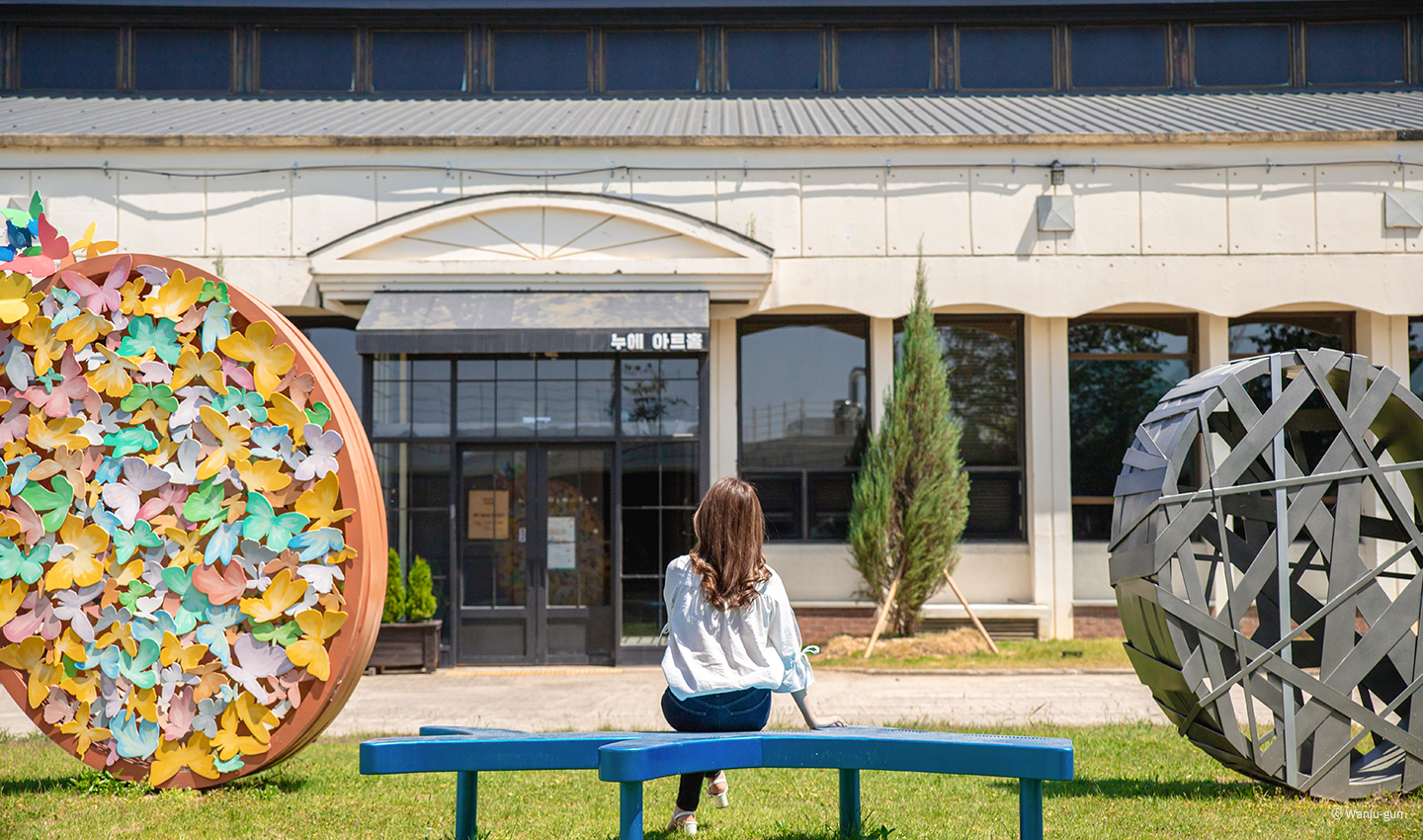
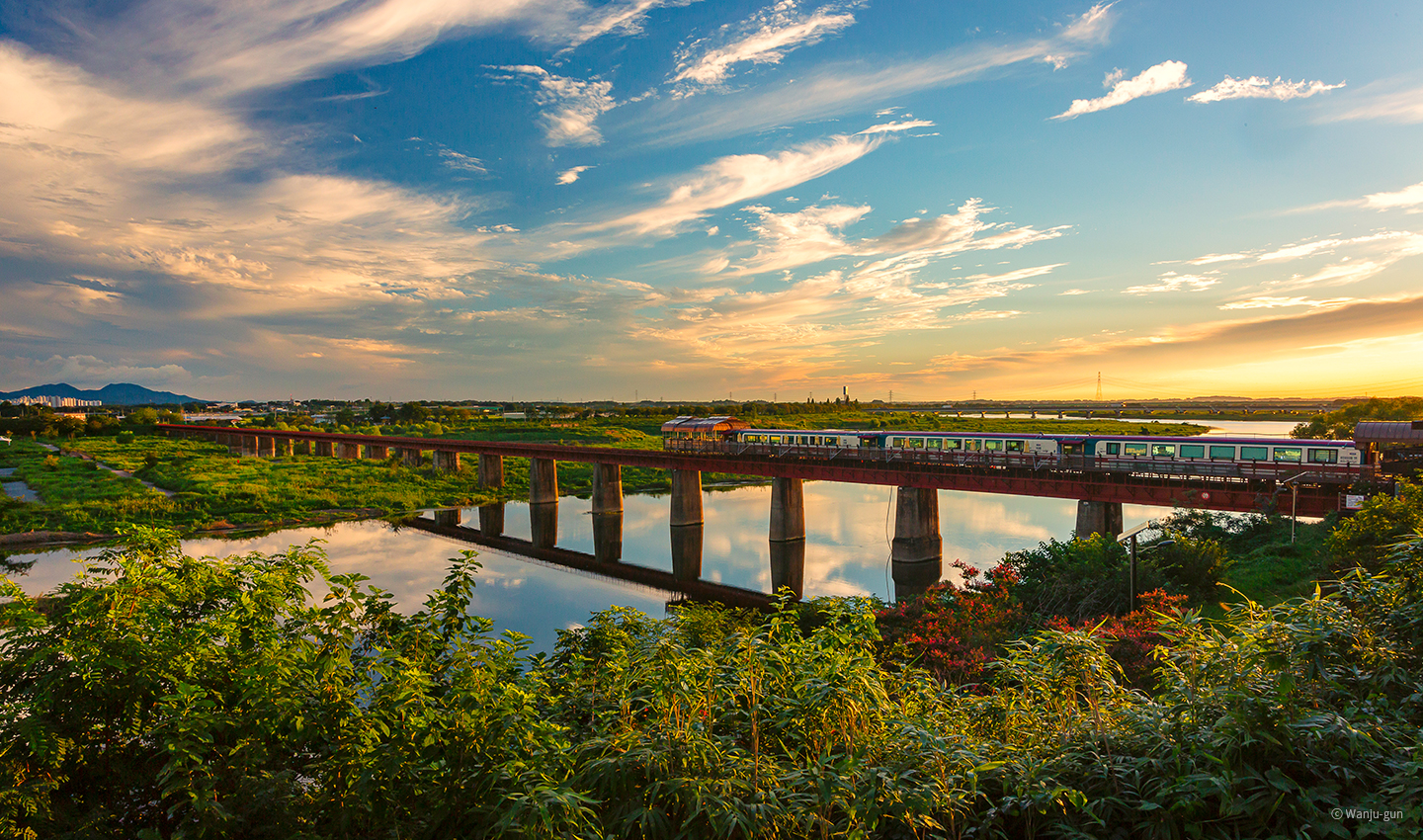
 View of all
View of all